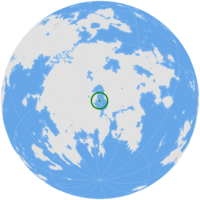Paxaklemtorno: Difference between revisions
mNo edit summary |
No edit summary |
||
| Line 1: | Line 1: | ||
{{wip}} | {{wip}} | ||
{{Region icon Anteria}} | |||
{{infobox country | {{infobox country | ||
|conventional_long_name = Kingdoms of Paxaklemtorno | |conventional_long_name = Kingdoms of Paxaklemtorno | ||
Revision as of 14:41, 27 June 2021
This article is incomplete because it is pending further input from participants, or it is a work-in-progress by one author. Please comment on this article's talk page to share your input, comments and questions. Note: To contribute to this article, you may need to seek help from the author(s) of this page. |
Kingdoms of Paxaklemtorno | |
|---|---|
| Motto: Numixaseredenjixaseol Free of bonds, free of pain | |
| Anthem: Selessmapexliana Sea of Stars | |
 Location of Paxaklemtorno in Anteria | |
| Capital | Niquenunipe |
| Official languages | Tqennin Auawan-Setumun |
| Ethnic groups (2020) | 54% Tqennu 22% Au 14% Setumue 8% Foreign Nationals 2% Other |
| Religion (2020) | 97% Qwesmenu 2% Christianity 1% Other |
| Demonym(s) | Passashan |
| Government | Federal semi-direct assembly-moderated democracy under an executive constitutional monarchy |
• Queen | Pexurtimu mwa XIX |
| Weteru Uahn | |
| Legislature | Federal Mdxlis |
| Council of Corners | |
| Popular Assembly | |
| Formation | |
| June 7th, 1232 BC | |
| August 23rd, 277 BC | |
| January 2nd, 571 | |
| November 7th, 1920 | |
| Area | |
• Total | 17,784 km2 (6,866 sq mi) |
| Population | |
• 2021 estimate | 7,100,000 |
• 2019 census | 7,024,680 |
• Density | 395/km2 (1,023.0/sq mi) |
| GDP (PPP) | 2019 estimate |
• Total | 349,702 billion ACU |
• Per capita | 49,782 ACU |
| Gini (2019) | low |
| HDI (2019) | very high |
| Currency | Passashan kernel (PXK) |
| Time zone | UTC-2 (PUT) |
| Driving side | right |
| Calling code | +909 |
| Internet TLD | .xp |
Paxaklemtorno (Passashi Phonetic: Passashlemtorna), or the Kingdoms of Paxaklemtorno, is an island nation in Northern Thrismari. Paxaklemtorno is located in the Marmor Sea, an internal sea of the Kaldaz Ocean, bordered by the island possessions of Encessia in the west and Senshen in the north. Paxaklemtorno spans an archipelago of the same name, though not fully, housing its greatly urbanised population. The capital of the Kingdoms, Niquenunipe, in which both the civil and the royal governments are located, is one of the jewels of the island of Waqa, which is the largest island of Paxaklemtorno.
The Kingdoms of Paxaklemtorno, first mentioned around the second millenium BC, are one of the oldest states in the world, with the earliest signs of paleohuman activity suggesting that the archipelago has been inhabited since the Old Stone Age. The legendary first monarch of the Kingdoms, Wqxm'pt, is credited with establishing the extant lineage of kings and queens during the 20th century BC. The earliest verified monarch, however, has lived around the 13th century BC, with the first power centre being the court in Waqa. The Younger Kingdoms have enjoyed a unique power divide, distinct from comparable monarchies, and the traces of that could be felt up until the 3rd century BC, when the internal conflicts coming from that divide have resulted in a civil strife. In turn, this caused a period of Wars of the Isles to come into being, during which the features of the Current Kingdoms were defined. The unique social and political organisation of the Kingdoms have driven it away from other nations in the area, causing it to enter a full isolation around the 10th century. Under their isolation, the Kingdoms of Paxaklemtorno entered a decline, which would continue well into the 18th century, when Encessia led the Day of Open Ports, after which the Kingdoms of Paxaklemtorno experienced forced reforms in the country and attempts to overthrow the monarchy. Ten Days of Xaxuaki and the diplomatic eminence of Passashan monarchs, namely Queen Henipua, heralded the transformation of the Kingdoms from a largely agrarian society to an industrial polity, paving the way for the Harmony Rebellion, which marked the formal recognition of the monarchy by foreign states.
Culture...
Economy...
Etymology
WIP
History
WIP
Geography
WIP
Politics
WIP
Economy
WIP
Culture
WIP
Demographics
WIP
See also
WIP
Notes and references
WIP

